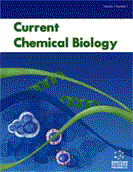Abstract
Several inflammatory mediators regulate the evolution of atherosclerosis. C-reactive protein (CRP) is an acutephase reactant, with a direct effect in inflammatory processes characterizing atherosclerosis. For this reason, CRP is actually considered as a factor, rather than simply a cardiovascular risk marker. The recent demonstration of CRP production not only by the liver, but also within atherosclerotic plaques by activated vascular cells, suggests a possible dual role, as both systemic and tissue molecule. Although more studies are needed, some therapeutic approaches to reduce CRP levels have been performed with encouraging results. Behavioral or pharmacologic interventions have been shown to reduce both CRP levels and the associated risk of cardiovascular acute events. Therefore, although most of national Cardiovascular Associations do not suggest high sensitivity CRP screening of the entire adult population as a public-health measure to stratify the cardiovascular risk, serum hs-CRP levels could be a promising target for therapies focused on reducing cardiovascular risk.
Keywords: cardiovascular risk, statins, C-reactive protein, Atherosclerosis
Current Chemical Biology
Title: Therapeutic Approaches for Reducing C-Reactive Protein (CRP) Levels and the Associated Cardiovascular Risk
Volume: 3 Issue: 1
Author(s): Francois Mach and Fabrizio Montecucco
Affiliation:
Keywords: cardiovascular risk, statins, C-reactive protein, Atherosclerosis
Abstract: Several inflammatory mediators regulate the evolution of atherosclerosis. C-reactive protein (CRP) is an acutephase reactant, with a direct effect in inflammatory processes characterizing atherosclerosis. For this reason, CRP is actually considered as a factor, rather than simply a cardiovascular risk marker. The recent demonstration of CRP production not only by the liver, but also within atherosclerotic plaques by activated vascular cells, suggests a possible dual role, as both systemic and tissue molecule. Although more studies are needed, some therapeutic approaches to reduce CRP levels have been performed with encouraging results. Behavioral or pharmacologic interventions have been shown to reduce both CRP levels and the associated risk of cardiovascular acute events. Therefore, although most of national Cardiovascular Associations do not suggest high sensitivity CRP screening of the entire adult population as a public-health measure to stratify the cardiovascular risk, serum hs-CRP levels could be a promising target for therapies focused on reducing cardiovascular risk.
Export Options
About this article
Cite this article as:
Mach Francois and Montecucco Fabrizio, Therapeutic Approaches for Reducing C-Reactive Protein (CRP) Levels and the Associated Cardiovascular Risk, Current Chemical Biology 2009; 3 (1) . https://dx.doi.org/10.2174/2212796810903010060
| DOI https://dx.doi.org/10.2174/2212796810903010060 |
Print ISSN 2212-7968 |
| Publisher Name Bentham Science Publisher |
Online ISSN 1872-3136 |
 16
16
- Author Guidelines
- Bentham Author Support Services (BASS)
- Graphical Abstracts
- Fabricating and Stating False Information
- Research Misconduct
- Post Publication Discussions and Corrections
- Publishing Ethics and Rectitude
- Increase Visibility of Your Article
- Archiving Policies
- Peer Review Workflow
- Order Your Article Before Print
- Promote Your Article
- Manuscript Transfer Facility
- Editorial Policies
- Allegations from Whistleblowers
- Announcements
Related Articles
-
Human Anthrax as a Re-Emerging Disease
Recent Patents on Anti-Infective Drug Discovery Human Recombinant Leptin Administration as a Potential Obesity Therapy
Immunology, Endocrine & Metabolic Agents in Medicinal Chemistry (Discontinued) Beneficial Effects of Herbs, Spices and Medicinal Plants on the Metabolic Syndrome, Brain and Cognitive Function
Central Nervous System Agents in Medicinal Chemistry Hypoxia Inducible Factor Stabilization As a Novel Strategy to Treat Anemia
Current Medicinal Chemistry Recents Patents for Isolating, Delivering and Tracking Adult Stem Cells in Regenerative Medicine
Recent Patents on Drug Delivery & Formulation Thyroid Hormones and Cardiovascular System: From Bench to Bedside
Current Drug Therapy Macronutrient Specific Postprandial Oxidative Stress: Relevance to the Development of Insulin Resistance
Current Diabetes Reviews Stem Cells and Translational Medicine: From Research to Clinical Procedures
Current Tissue Engineering (Discontinued) Relationship Between Hypertension and Atherosclerosis: From a Viewpoint of the Most Potent Vasoconstrictor Human Urotensin II
Current Hypertension Reviews Pharmacological Inhibition of Platelet Reactivity. Clinical and Pharmacodynamic Effects
Current Vascular Pharmacology Subject Index to Volume 9
Current Pharmaceutical Design Solution NMR Study of the Transmembrane Domain of Single-Span Membrane Proteins: Opportunities and Strategies
Current Protein & Peptide Science Genomic and Epigenetic Complexity of the FOXF1 Locus in 16q24.1: Implications for Development and Disease
Current Genomics Failing a First Anti-TNF in RA: Does it Imply a Change in Target?
Current Rheumatology Reviews Considering Circadian Pattern of Blood Pressure in the Treatment of Hypertension via Chronotherapy: A Conducive or Maladroit Approach
Current Drug Targets Molecular Mechanisms of Thiamine Utilization.
Current Molecular Medicine MicroRNA in Aging: From Discovery to Biology
Current Genomics Mood Stabilizers, Oxidative Stress and Antioxidative Defense in Euthymia of Bipolar Disorder
CNS & Neurological Disorders - Drug Targets An Overview of Phytotherapeutic Approaches for the Treatment of Tuberculosis
Mini-Reviews in Medicinal Chemistry Cancer Prevention with Promising Natural Products: Mechanisms of Action and Molecular Targets
Anti-Cancer Agents in Medicinal Chemistry

















.jpeg)








